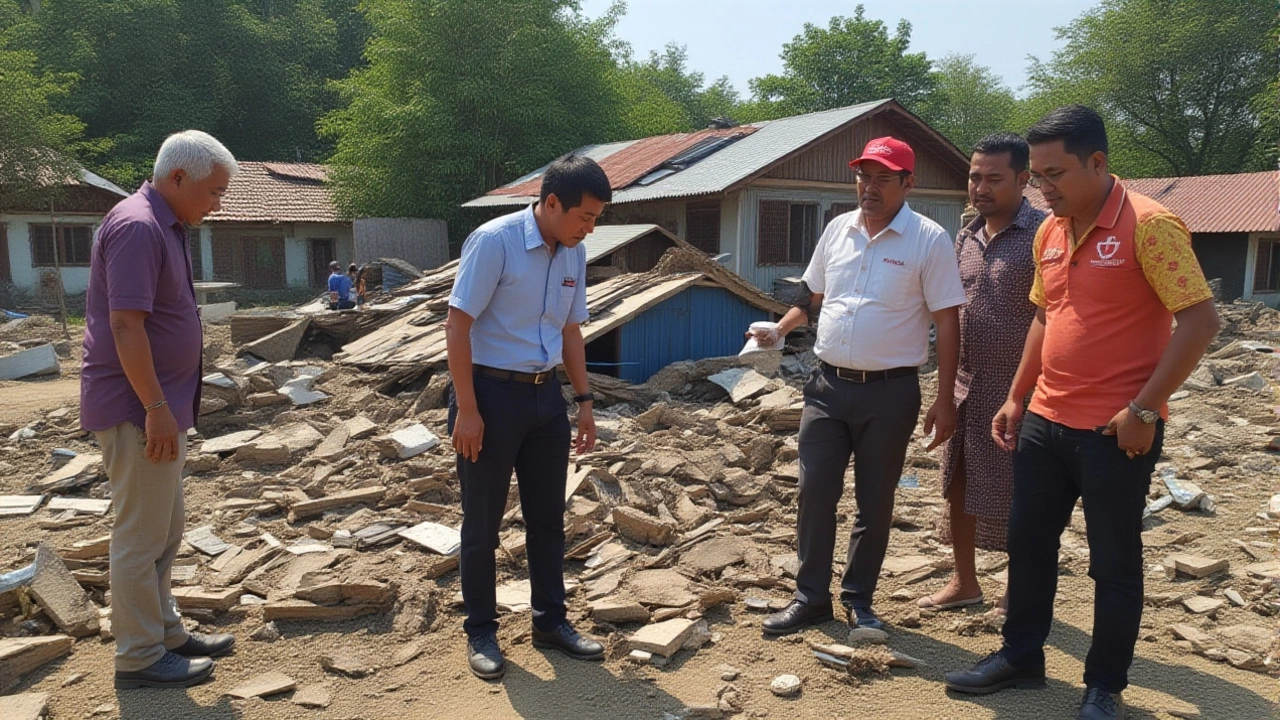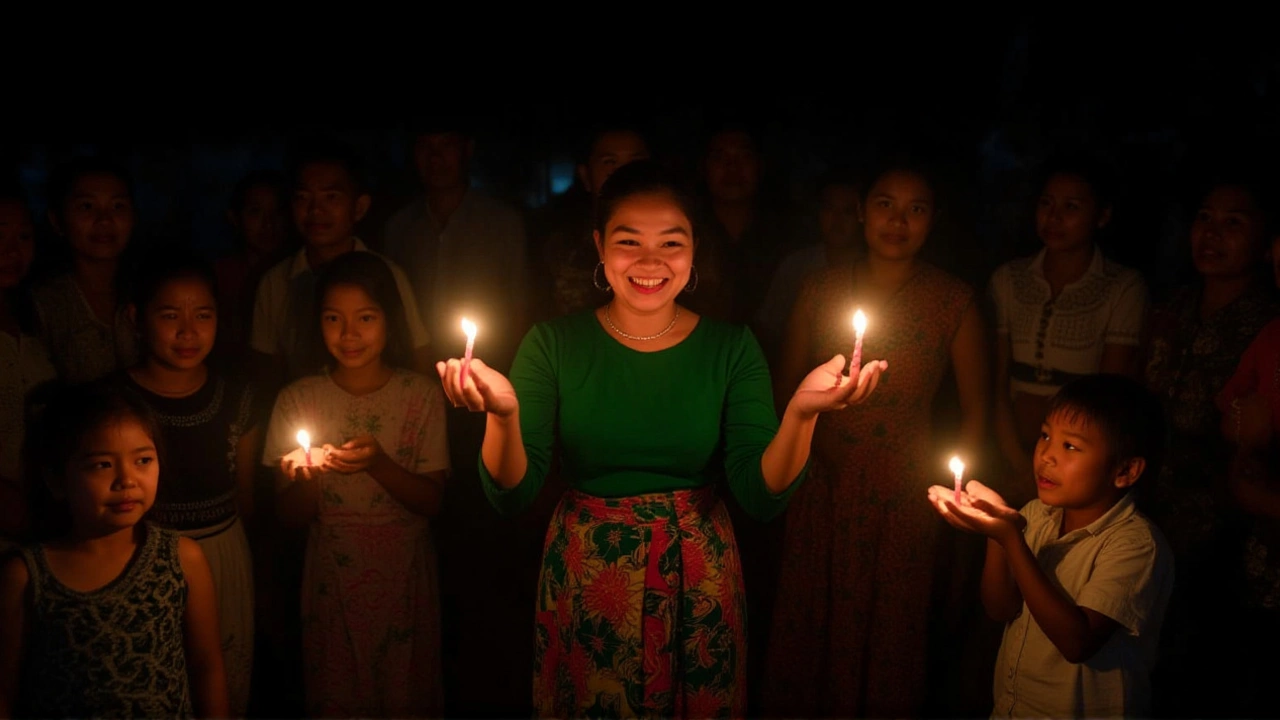Myanmar's 7.8 Quake Ravages Mandalay, Triggers Regional Humanitarian Crisis

When Kyi Minn, national director of World Vision in Myanmar, first heard the roar on 28 March 2025, she knew the country faced a disaster unlike any in a century.
At 12:50:52 MMT (06:20:52 UTC), a magnitude 7.5–7.9 quake jolted the Sagaing Region, its epicenter just 17 km southeast of Mandalay. Within minutes a 6.4 aftershock rattled the same ground, and a third tremor of 5.1 struck on 30 March, compounding the chaos.
Background: Fault Lines and Political Turmoil
Myanmar sits on the boundary between the Indian and Eurasian plates, a zone that has produced fatal shocks in 1912 and the infamous 1930 Bago quake. Yet the social fault lines are arguably deeper. Since the 2021 military coup, the junta’s grip has isolated the nation, limiting external aid and sparking a civil war that now intertwines with any emergency response.
The region most vulnerable—Sagaing, Mandalay, Magway, eastern Shan, Naypyidaw and Bago—already hosts a patchwork of ethnic militias, displaced populations, and a fragile health system. The United Nations, for its part, had warned earlier in 2025 that over 25 million people lived in food‑insecure zones, a figure that the quake would soon dwarf.
The Quake and Immediate Impact
The initial shock shattered the Ma Soe Yane monastery, reduced the centuries‑old bridge linking Sagaing and Mandalay to rubble, and crushed the runway at Mandalay International Airport, forcing a complete shutdown.
In the bustling Sein Panyat neighbourhood, where half the residents lived in makeshift shacks, fire ignited by broken gas lines consumed all 400 homes. More than 2,000 people found themselves without shelter, food, or clean water.
Tragedy struck religious sites too. At least 500 Muslims perished when two mosques collapsed during Friday prayers; dozens of Buddhist pagodas and over 8,300 monasteries, nunneries, and shrines vanished in the aftermath.
Across borders, the tremor was felt in Bangkok, where a 30‑story State Audit Office tower under construction toppled, killing 18 and leaving 78 missing. In China’s border city of Ruili, Yunnan, and in Vietnam’s Ho Chi Minh City, injuries were reported and apartments cracked open, underscoring the quake’s far‑reaching force.
Humanitarian Response: Aid Amid Chaos
The World Health Organization’s Health Emergencies Programme, led by Dr Maria Gómez, confirmed by 7 April that more than 3,500 people had died in Myanmar, with injuries topping 5,000 and 200 still unaccounted for. Disaster Philanthropy recorded slightly higher fatalities—3,768 dead and 5,104 injured—and added a grim tally of 30 dead in Thailand.
“Families are struggling to survive soaring temperatures without shelter, food, or medical care while enduring immense physical and emotional trauma,” Kyi Minn told reporters. She added that children are at “heightened risk of labor, early marriage, and exploitation” unless safe spaces are restored.
The United Nations Office for the Coordination of Humanitarian Affairs (OCHA) estimated that over 28 million people—roughly one‑third of Myanmar’s population—require assistance, from emergency shelter to clean water. Yet delivering aid is an ordeal. Roads to Sagaing and Magway are shattered, while the military’s ongoing airstrikes—108 reported between 28 March and 31 May—have rendered many villages inaccessible.
Despite the junta’s rare appeal for international help, the regime’s tight control over borders and its history of diverting aid supplies have sown distrust among NGOs. “We can’t guarantee that our trucks will reach the villages without being stopped or commandeered,” said Aung Soe, logistics chief for Doctors Without Borders (MSF).

Ongoing Challenges: Heat, Rain, and Conflict
Adding to the nightmare, temperatures have surged past 40 °C, turning makeshift tents into ovens. Heavy monsoon rains, which began in early April, have turned roads into mudslides, slowing the delivery of food pallets and medical kits.
Power outages cripple communications. Villagers relying on solar chargers can only send brief messages, making it hard for responders to assess needs in real time. Water sources, already depleted, have been contaminated by aftershocks that cracked wells.
The civil war’s intensification is a third, unbidden variable. Airstrikes have targeted relief convoys, killing at least 89 civilians between March and May, according to the United Nations Human Rights Office. Such attacks not only increase casualties but also deter aid workers from entering high‑risk zones.
Regional Fallout and International Reaction
Thailand’s government declared a three‑day mourning period after the State Audit Office collapse and pledged $5 million in emergency funds. China sent a rapid‑response team to Ruili, focusing on structural inspections of schools and hospitals.
In a rare diplomatic move, the United Nations Security Council convened a special session on 12 April, urging a temporary ceasefire to allow humanitarian corridors. While the junta has not formally agreed, a tacit pause in air operations was observed near the capital Naypyidaw for two weeks.
International NGOs have begun air‑dropping supplies via UN helicopters, but the limited runway at Mandalay Airport means only small payloads can be delivered per flight. Meanwhile, the Red Cross is coordinating with local religious leaders to open temporary shelters within surviving monasteries and mosques.

Looking Ahead: Rebuilding and Resilience
Experts say the recovery will stretch for years. Dr Anita Rao, a seismologist at the University of Tokyo, warns that the region’s stress buildup could trigger another major quake within the next decade. “Preparedness must become a permanent part of community planning,” she noted.
For now, the focus remains on getting food, water, and medical care to the 2,000+ families still sleeping under tarps in Sein Panyat and the countless displaced across Sagaing. The next months will test whether the international community can sidestep political barriers and deliver aid before the scorching season turns the disaster into a full‑blown humanitarian catastrophe.
Frequently Asked Questions
How many people are estimated to need aid in Myanmar after the quake?
The United Nations puts the figure at over 28 million individuals across six regions, representing more than one‑third of the country's total population. This includes those who lost homes, access to clean water, or medical services.
What specific challenges are hindering relief efforts?
Damaged roads and a closed airport in Mandalay make transport of supplies extremely slow. On top of that, the military’s airstrikes have forced NGOs to reroute convoys, while extreme heat and heavy rains have created additional health risks and flooding.
Which neighboring countries felt the earthquake, and what were their casualties?
Thailand reported 30 deaths and 38 injuries, most notably from the collapse of a construction site in Bangkok. China saw injuries and structural damage in Yunnan’s border city of Ruili, while Vietnam recorded one death from shock and dozens of apartment damages in Ho Chi Minh City.
What role is the World Health Organization playing?
WHO’s Health Emergencies Programme is tracking mortality and morbidity, coordinating medical teams, and issuing health‑needs assessments. As of early April, they reported over 3,500 deaths, nearly 5,000 injuries, and ongoing acute care shortages.
Will the military junta’s request for aid improve the situation?
The request is a step forward, but the junta’s tight control over borders and its history of diverting resources mean that international agencies must negotiate carefully. A temporary cease‑fire observed in May offers a small opening for humanitarian corridors.